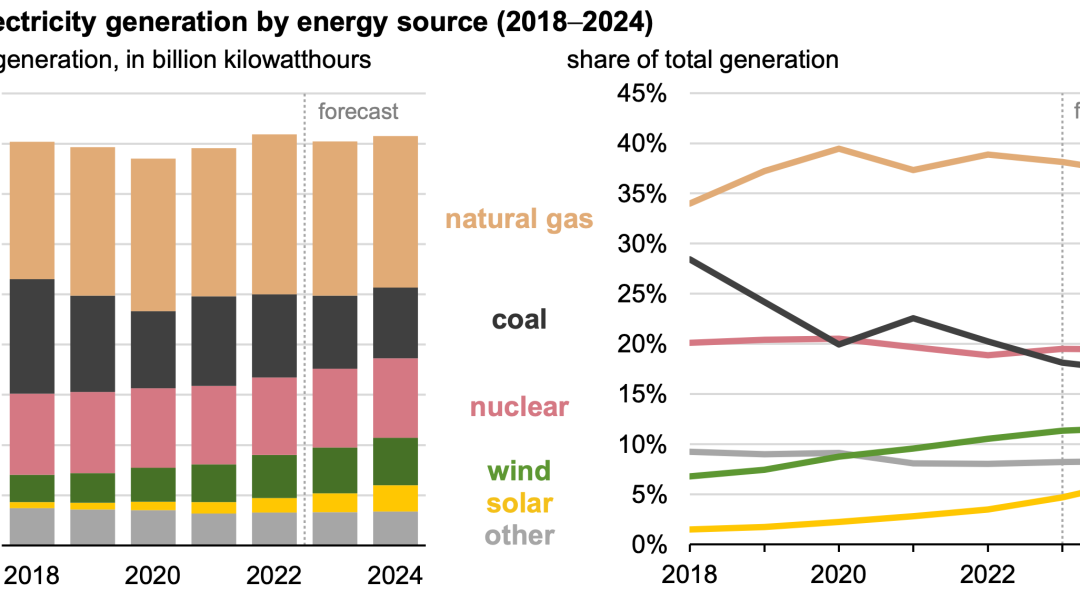
Short-Term Outlook
Exciting news from the Energy Information Agency (EIA)! According to their latest Short-Term Energy Outlook, the United States is on the verge of a significant milestone in renewable energy generation. By this year or the next, one-fourth of the country’s electricity supply will be derived from solar, wind, and other renewable sources.
Increased Demand for Solar and Wind
The EIA anticipates that the growth of solar and wind power will lead to a reduction in electricity generation from coal and natural gas-fired power plants over the next two years. This transition highlights the increasing demand for solar and wind projects nationwide, further solidifying the renewable energy sector’s vital role in our energy mix.
Rapid Grow for Renewables
Alex Formuzis, spokesperson for the Environmental Working Group, emphasized the rapid growth of renewables in the U.S. electricity landscape. He stated, “The steady growth of renewables in the U.S. electricity mix underscores the rapid increase in demand for solar and wind projects across the country.”
Supporting this transition, the federal Inflation Reduction Act, signed into law by President Joe Biden, provides over $360 billion for various climate mitigation and clean energy initiatives. With the significant funding allocated by this act, it is likely that the percentage of solar- and wind-generated electricity could surpass the EIA’s projections over the next two years.
What the Numbers about the US Power Supply
The EIA’s report forecasts that renewable-generated electricity, encompassing solar, wind, and hydropower, will rise from 24 percent to 26 percent by the end of 2024. Coal-generated power will dip from 18 percent to 17 percent, while electricity from natural gas will decrease from 38 percent to 37 percent. Nuclear power plants will continue to provide a steady 19 percent of the total U.S. power supply.
Substantial Tax Credits Support Solar Growth
To support the adoption of solar energy, the Inflation Reduction Act includes substantial tax credits and incentives for individuals and small businesses to install solar panels and battery storage.
Incentives Reduced for New Solar Customers in California
However, recent developments in California have raised concerns. Regulators in the state decided to reduce incentive credits for new solar customers who generate and sell surplus energy back to the grid. This decision may hamper the residential solar market in California, which has been a leader in rooftop solar installations. Over 1.5 million homes, small businesses, and other structures have taken advantage of incentives to embrace solar energy
Monopoly Power Companies have Opposed Residential Solar Initiatives
For over a decade, monopoly power companies, urged by the industry’s main trade and lobby group, the Edison Electric Institute, have opposed residential solar initiatives across the country due to the threat these programs pose to utility profits.
As we continue to witness the significant growth of renewable energy, it is important to stay informed and engaged in shaping a sustainable future. Together, we can overcome challenges, advocate for favorable policies, and accelerate the adoption of solar energy across the nation. Find out more about converting to solar at the house.
Regenerate response

